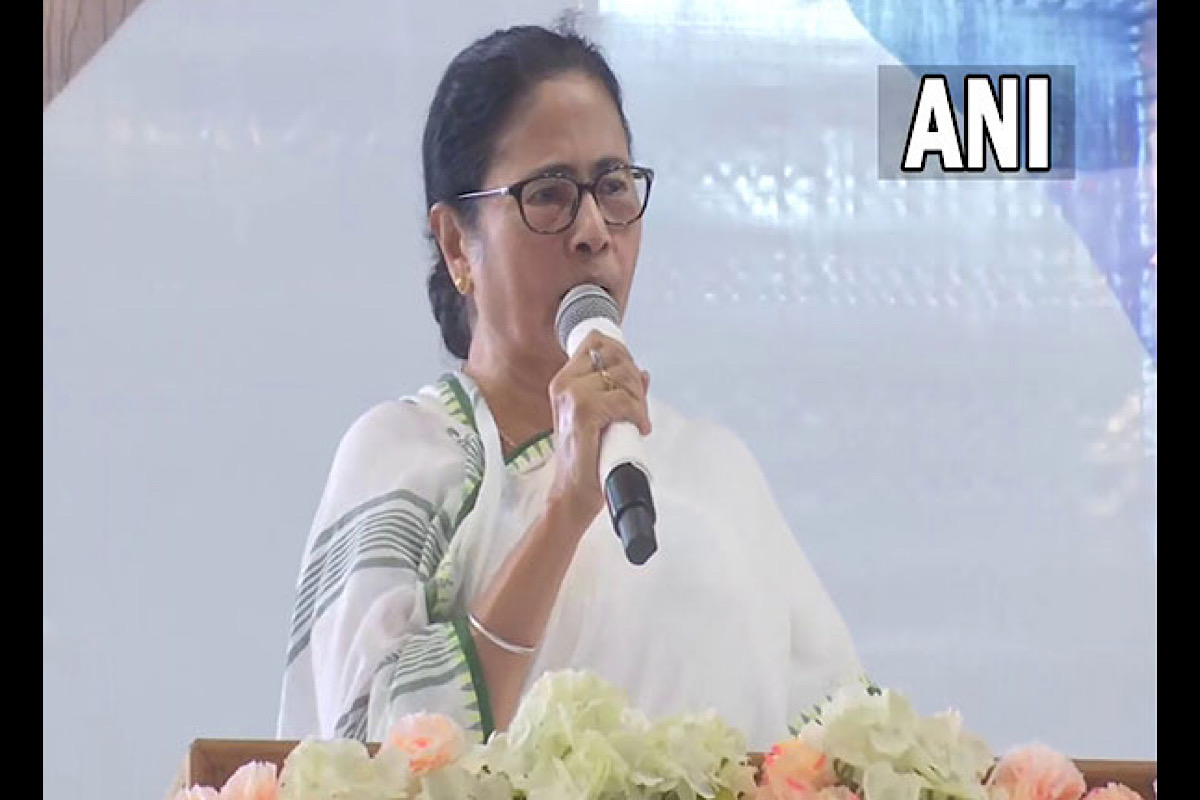Don’t divide your votes, Mamata urges in Malda
Chief Minister Mamata Banerjee today urged the people of Malda to ensure the BJP lost in Bengal by supporting only Trinamul Congress candidates.

Bengal Chief minister Mamata Banerjee [Photo:ANI]
The caution of utter financial mismanagement and blatant statistical jugglery to cover that up in the state finance of West Bengal has been cautioned by the economics related academic circles for quite some time. The same thing has been revealed in the latest report of the Comptroller and Auditor General (CAG).
As per the CAG report, the instance of blatant jugglery has been witnessed in the attempt to project a lower revenue deficit through misclassification of revenue transactions under capital section and non-accountal of other liabilities.
CAG report has observed that the revenue deficit increase of 50.18 per cent as portrayed by the state government for 2020-21, the latest available, would have been much higher had not the state resorted to such misclassifications.
Advertisement
Economists like P.K Mukhopadhyay feel that a revenue deficit increase of 50.18 per cent on a year-on-year basis is as it is very high for a state government like West Bengal with extremely limited avenues of state’s own tax revenue generation.
“If you study the latest CAG report carefully you will see that there had been an increase in revenue expenditure of 9.44 per cent during the fiscal under review. So, such an unbridled increase in revenue expenditure with limited avenues of state’s own tax generation is bound to result in such a high revenue deficit increase. So, again it is natural that the state government will try to project a lower revenue deficit increase figure through such misclassifications as pointed out in the CAG report,” he explained.
He said that the only way to come out of this mismanagement and resultant financial jugglery is to either have a check on revenue expenditure or increase the avenues of state’s own tax revenue generation.
“In case of West Bengal there is a requirement for both. First the state government should drastically cut down its expenditures on account of non- productive dole schemes and spending behind festivals. At the same time, the state government should frame policies for attracting big-ticket investments both in the manufacturing and services sector to open other avenues of state’s own tax revenue generally which so far is heavily dependent on the state excise component,” Mukhopadhyay explained.
Economists studying the contents of the latest CAG report have also pointed out the concerns about increasing outstanding liabilities of West Bengal thus restricting the most important aspect of asset creation in the state.
CAG, in its report, has pointed out that starting from the financial year 2016 till 2020-21, outstanding liabilities of the West Bengal government were also above the targets.
“The liabilities of the state have been increasing year-on-year and over 58.84 per cent of market borrowings during the year 2020-21 were utilised to balance the revenue account of the state thereby restricting asset creation in the state,” the CAG report reads.
Economists have pointed out that the highlighted CAG report has also highlighted the aspect of the state pathetically lagging in the advance planning and accurate estimation of revenues and expenditure, with blatant instances of excess expenditure in grant or large savings.
“What is more pathetic as pointed out in the CAG report is that the controlling officers of the state government have not come out with definite explanations on the reasons for such excess expenditure,” Mukhopadhyay pointed out.
The CAG report has also raised concerns over a number of unnecessary supplementary provisions on this count.
Raising concern over this excess expenditure of grants, the CAG report has pointed out that persistent excess expenditure over grants approved by the State Legislature is in violation of the will of the Legislature and needs to be viewed seriously.
The CAG report has also questioned the transparency in financial reporting and obscured proper analysis of allocative priorities and quality of expenditure by the state government.
Advertisement